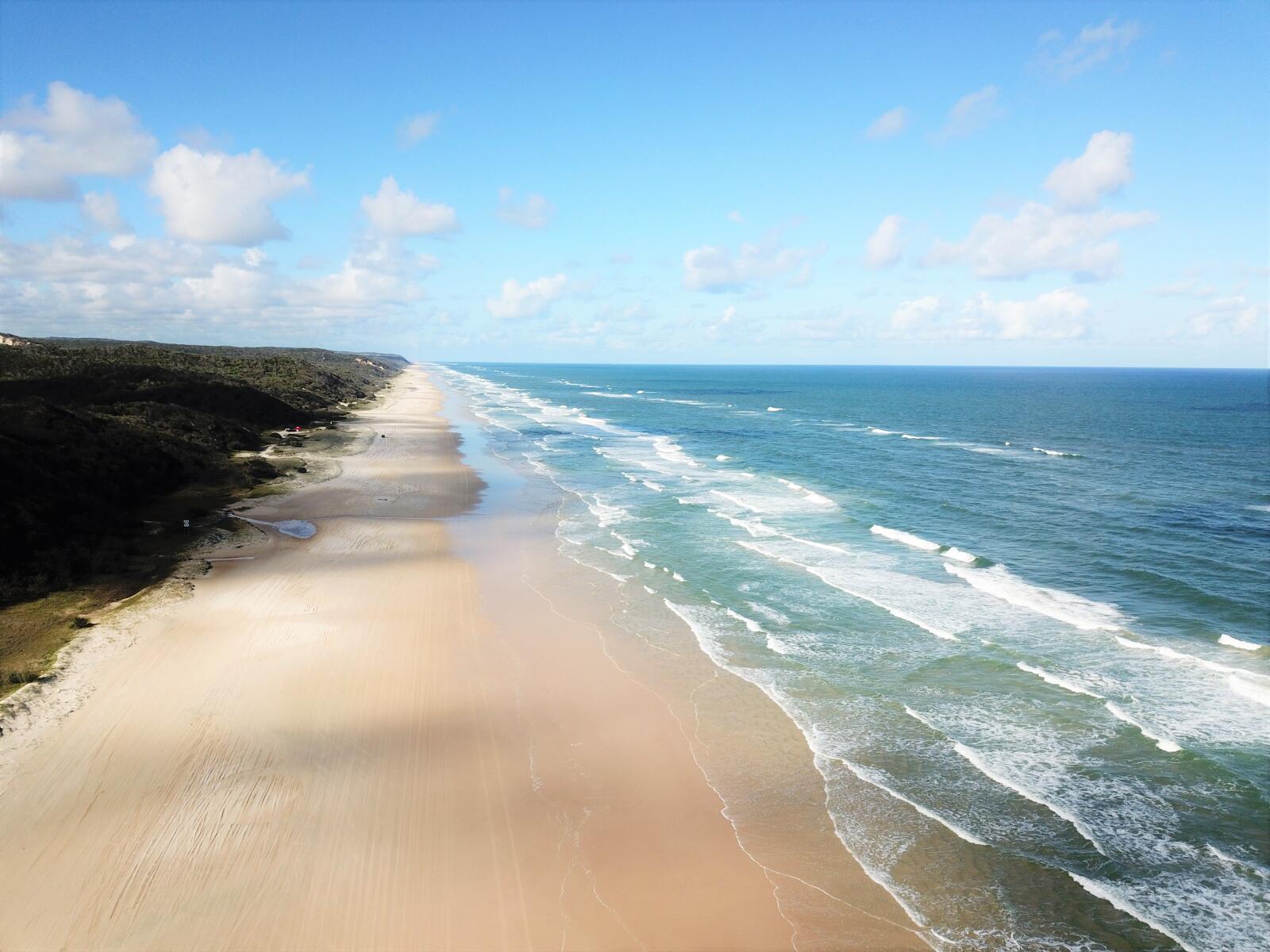Driving on Fraser Island

Fraser Island Beaches
Beaches have particular driving hazards.
Deep washouts can happen at any time, particularly after heavy rain and rough seas.
Wave action can expose dangerous rocks overnight. Big high tides can cover the entire beach, with waves washing up to the foredunes and leaving no option but to drive through salt water. This is dangerous. Your vehicle may sink, overturn or be quickly inundated by the rising tide.
Driving on the western beach is not recommended.
The ever-changing weed banks that lie buried under the sand along the western beach (and occasionally on the eastern beach) deceive even experienced drivers. Your vehicle may sink. Tow trucks are many hours away. Drive with another 4WD or enjoy a walk instead.
Normal road rules apply
All inland roads, vehicle tracks and beaches are designated roads and normal road rules apply. Police patrol all areas of Fraser Island. Speed checks and breath testing can happen at any time of day. Maximum allowable blood alcohol level for drivers in Australia is .05.
Speed limits on the island:
- 40km/hr shared zones on the eastern beach
- 80km/hr on the eastern beach
- 50km/hr on Hook Point inland road
- 35km/hr on all other inland roads.
But always drive to suit conditions.
Only use indicators when overtaking or turning. Keep to the left of oncoming vehicles at all times.
Right of way
All standard give-way rules apply. However, most of the roads are narrow and carry two-way traffic. When safe, give right of way to buses, trucks and to vehicles travelling downhill or towing trailers. Passing bays are frequent. If possible, drive forwards into them.
Give way and drive slowly around dingoes, birds and other wildlife on the beach.
Aircraft
Aircraft landing zones are signposted and marked with orange cone markers along the beach. Planes need to land on the harder sand close to the water's edge. Vehicles should move to the upper beach, but not onto vegetation drivers should heed aircraft traffic controller directions.
Tyre Pressure
If you choose to reduce tyre pressure to help with traction in soft sand, particularly at Indian Head bypass and further north, select low gears and avoid sharp turns and sudden braking, as tyres can roll off their rims. When deflating, keep within manufacturer's recommendations. Re-inflate to resume speed on harder sand and for mainland driving.
Best travelling times
Avoid driving during the two hours either side of high tide - and often for longer, as some areas are more affected than others by tidal activity and onshore winds. For safety, avoid travelling at night.
Stay on formed tracks across dunes
It is illegal to drive on dunes. Look for formed entrance tracks into beach camping areas.
Don't let your trip turn to tragedy
Slow down and give way when passing pedestrians, especially around the Maheno wreck. Pedestrians often cannot hear approaching vehicles above the sound of the surf. Never sleep, sit or picnic in vehicle traffic zones such as the beach, roads or campground access tracks. Remember that Fraser Island's eastern beach is considered a highway.
Stay alert when driving on Fraser Island. Accidents have happened due to reckless driving or silly pranks. Passengers have suffered serious spinal injuries in vehicles travelling too fast for the road or beach conditions. If your driver makes you feel unsafe in a vehicle -- say something. Slow is safe!
Be very careful when crossing Eli, Wyuna and Coongul Creeks. Large volumes of water create steep creek banks.
Never attempt to cross Wathumba Creek or Moon Point estuaries.
Before crossing any creek, walk through it, if safe, to check the depth of water and softness of sand. Never stop your vehicle midstream; your vehicle may sink or stall.
